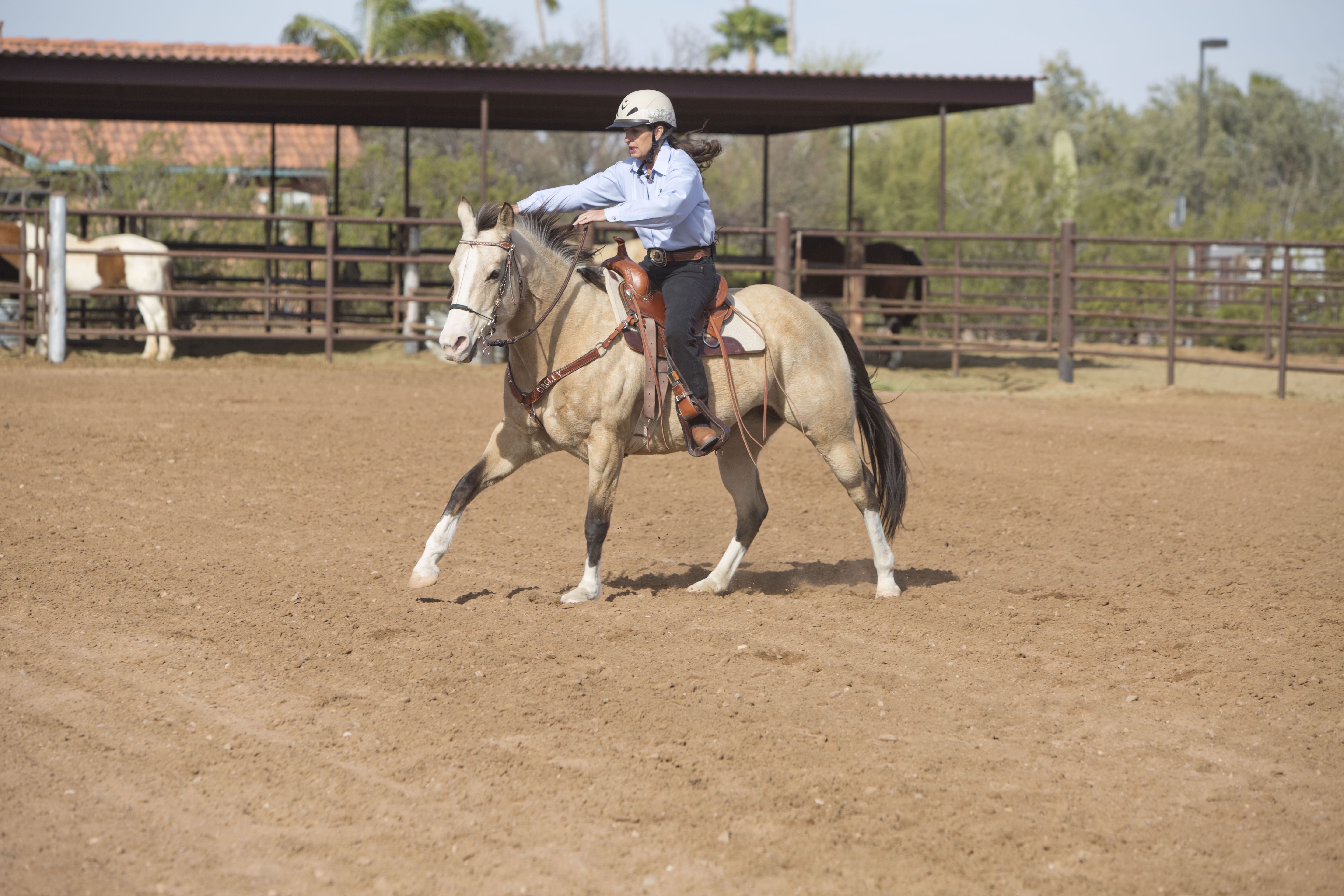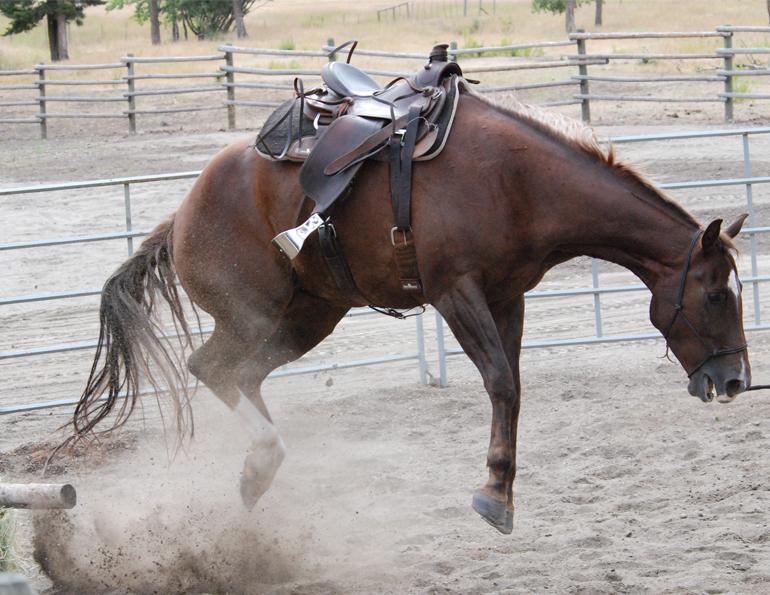There are many possible reasons why a horse will not canter. Some common issues include pain or discomfort from an injury, soreness due to improper training, fear of the environment or situation, lack of trust in its rider, and imbalance between the front and hind end. If your horse is unwilling to cancer, it’s important to evaluate each possibility carefully.
Have a veterinarian check for any physical problems, such as lameness or dental issues, that could be causing your horse distress. Ensure you have been training correctly and consistently so your horse is comfortable with their cues. Evaluate what environmental factors might be making them uncomfortable, such as large crowds or loud noises.
Finally, build trust by spending time together in the saddle before asking for more advanced maneuvers like the canter transition.
When you’re trying to get your horse to canter, but all they do is trot, it can be incredibly frustrating. The first thing to do is make sure that your horse’s saddle and other tack are fitting properly. If something isn’t quite right with the fit of the saddle or bridle, then this could be causing discomfort, which may lead to them not wanting to canter.
Also, check their feet for any tenderness if they have sore feet; then again, this could cause resistance when asking them to canter. Finally, assess how much conditioning your horse has had and what type of terrain you are riding on; both these factors will affect their ability and willingness to move into a faster gait like a canter. If you went to know more about why won’t my horse canter, keep reading!
Your Horse Won’t Canter? Here’s why!
How Do You Encourage a Horse to Canter?
When encouraging a horse to canter, it is important to remember that the horse must first be comfortable and relaxed at a walk or trot before progressing into the canter. To encourage your horse to canter, begin by using specific signals such as squeezing with both legs and clucking with your tongue. These signals should be used consistently each time you ask for the transition so that your horse will quickly understand what you are asking them to do.
Once in the canter, use light contact on the reins while keeping an even pressure on both sides of your horse’s mouth. Make sure not to pull back too hard on their mouth, as this could cause them distress and make them resist further attempts at transitioning into a canter.
How Do You Keep a Lazy Horse Cantering?
The most important factor in keeping a lazy horse cantering is to ensure your horse has sufficient energy. To do this, provide them with plenty of hay and feed, as well as regular exercise. Make sure that the exercises you do are varied and involve some form of cantering.
For example, try introducing poles on the ground or cavaletti to create obstacles for the horse to clear while they canter around the arena. It’s also important to use positive reinforcement when training your lazy horse – reward them with verbal praise and treats when they complete tasks correctly so they understand what behaviour you expect from them. If your horse continues to be unresponsive or resistant, consider hiring an experienced trainer who is familiar with working with lazy horses so they can help motivate and guide your animal in a safe manner.
How Do You Ask a Stubborn Horse to Canter?
When asking a stubborn horse to canter, it is important to establish a trusting and respectful relationship between you and the horse first. Start by introducing your horse to basic commands such as walking, trotting, and stopping. Once you have established this connection with your horse, begin working on exercises that prepare him for the canter cue.
For example, ask your horse to transition from walk to trot in an extended frame without rushing or speeding up too quickly. This will help him understand what is expected of him before attempting more advanced movements like the canter. Additionally, make sure that your cues are consistent; using different aids for the same command may confuse or frustrate your horse.
Lastly, provide plenty of positive reinforcement when he does something correctly – treats and verbal praise will let him know that he is doing well!
How Do You Teach a Lazy Horse to Canter?
Teaching a lazy horse to canter requires patience and persistence. Start by teaching the horse to move forward at all gaits and ensure he understands you want him forward, not backward or sideways. Once your horse is comfortable moving off of pressure, start asking for faster speeds until you are both comfortable with the slowest version of cantering.
Work on transitions from walk to trot then from trot to canter before attempting any distances. When ready, move onto longer stretches of cantering in straight lines; gradually increasing the distance over time as your horse’s fitness improves. Finally, add some circles and serpentines into your sessions so that the horse becomes more engaged in his work; this will help him build up strength and become more responsive when asked for more speed during future rides.

Credit: signin.juliegoodnight.com
Horse Pins Ears When Asked to Canter
Horse pins its ears when asked to canter, is a common behavior seen in horses. This action shows that the horse is alert and aware of his surroundings. The pinning of the ears indicates that the horse has understood your request to canter and is ready to do so.
It may also signal that the horse is feeling anxious or excited about what you have asked it to do. Therefore, it’s important for riders to be mindful of their body language when asking a horse to perform any movements, including cantering, as this will help ensure a safe and successful transition between gaits for both rider and horse alike.
Young Horse Struggling to Canter
Young horses often struggle with cantering because it requires coordination and balance. Cantering is a three-beat gait, meaning that the horse has to move its legs in a coordinated way so that all four feet are off the ground at some point during each stride. This takes practice and patience from both horse and rider as they learn to coordinate their movements together.
Additionally, canter transitions require the horse to shift his weight over his hindquarters which helps him balance during the more strenuous movement—something young horses may not yet have developed enough strength for. However, most young horses eventually become comfortable with cantering with proper training and positive reinforcement.
Horse Canter Problems
Horses canter problems are common and can be caused by a variety of issues. Poor riding technique, incorrect tack, or physical pain from saddle sores or lameness can all lead to difficulty with the horse’s gait. If your horse is having trouble cantering, contact a professional equine specialist for help in diagnosing and treating the problem.
Horse Reluctant to Trot
Horse reluctance to trot is a common problem that horse owners face. It can be caused by a variety of factors, such as fear, pain, or an unfamiliar environment. In order to address this issue, it’s important to identify the underlying cause and work with your horse in a gentle and patient manner.
Through proper training techniques like desensitization exercises and groundwork, you will eventually be able to get your horse comfortable enough with trotting that it becomes second nature.
Horse Struggling to Canter on Right Rein
Horse struggling to canter on the right rein is a common issue with riders, but it doesn’t have to be an ongoing problem. The key to solving this issue lies in understanding the biomechanics of riding and analyzing what is causing your horse’s difficulty. Common causes for horses not wanting or being able to canter on the right rein include tightness in certain muscles, incorrect body position of the rider, and improper balance of weight distribution between reins.
With correct diagnosis and practice, you will eventually be able to help your horse become comfortable with cantering on both reins.
Horse Keeps Stopping When Riding
Riding a horse that keeps stopping may be frustrating, but it’s important to remember that this is often a sign of an underlying issue. The horse may be trying to tell you something, such as feeling pain or discomfort. If your horse keeps stopping when riding, consider having them examined by a vet and talk with your trainer about possible causes and solutions.
It can also help to adjust your riding technique and make sure the saddle fits properly so the horse is comfortable while being ridden.
Horse Struggling With Left Canter
When a horse is struggling with the left canter, it may be caused by an imbalance in their body. Improper muscle development or tension on one side of the body can cause them to struggle and lead to difficulty cantering on that side. To help improve this issue, riders should focus on strengthening exercises for the hindquarters and engage in lateral work such as shoulder-in, haunches-in, leg yield, and traverse movements.
Additionally, regular chiropractic care and massage therapy will help keep muscles relaxed so they are better able to move freely while performing difficult maneuvers like a canter.
Why Won T My Horse Lope
If your horse doesn’t lope, it could be due to several factors. It may not have been properly trained or conditioned for loping. It might also be scared of the conditions around it, such as a noisy environment or an unfamiliar rider.
Additionally, horses can sometimes become resistant to loping if they are in pain from sore muscles or joint issues. A thorough vet check should help identify any potential health problems that could be causing your horse’s reluctance to lope. If all else fails, you may need to consult a professional trainer for assistance in getting your horse comfortable and confident with the process of loping again.
Conclusion
In conclusion, it is important to remember that cantering is not a skill that horses learn overnight. It takes time and patience for both the horse and rider to develop the necessary skills for successful cantering. If your horse has difficulty cantering, consider consulting a qualified instructor or trainer who may be able to identify any issues preventing your horse from picking up the proper gait.
With diligence and practice, you will eventually be able to enjoy riding at this enjoyable speed with your equine partner! Thank you for reading our post about why won’t my horse canter.


